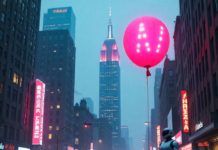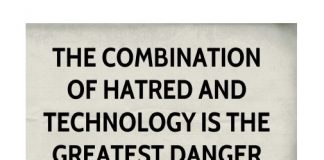MARKET PERSPECTIVE
By J Mulraj
Aug 25- Sep 1, 2023
China is a riddle, wrapped in a mystery inside an enigma
The lyrics of a song in the popular movie, Sound of Music, were ‘how do you solve a problem like Maria’. Replace that with Chi-ee-na, and it applies to China, the world’s #2 economy.
China is, to borrow from Winston Churchill, a riddle, wrapped in a mystery inside an enigma. As the #2 economy, it is imperative for investors to study and understand it.
The Chinese economy took off in 1978, after it was opened up, by Deng Xiao Ping. (India opened up its economy, only in 1991, under Manmohan Singh. We wasted 13 years in political squabbling, resulting in China’s GDP being 5.5 times bigger than India’s, today). Deng’s famous quote, to propel its economic growth was ‘I don’t care if the cat is black or white, so long as it catches mice’.
In the 45 years since, not only did China’s economy, and standard of living, grow impressively, but so did its scientific prowess. Watch this video which mentions some of its technological achievements such as the Shanghai Towers, not only the #3 tallest in the world, but also the holder of a platinum certificate for leadership in environmental design, or its high speed train network, #1 in the world, at 35,000 kms, or the Ping Tang Bridge, over a valley with a height of 565 metres. China is a leader in technologies like AI, robotics, and in telecom, despite efforts by the West to stall its progress. In 1978 it undertook the Great Green Wall of China project, meant to halt desertification. Deserts constitute 27% of its land mass. We must applaud its technological achievements.
After initially ‘borrowing’ technologies from the West, China has gained the ability to develop their own. Today China holds the most number of patents, globally.
So China has demonstrated its technological prowess in many areas. That’s one side of the Chinese enigma.
Then there is the other side. It’s reversal of the very policies that propelled its economic growth, its impervious lockdowns of citizens during Covid, some who perished in fires, unable to escape because the doors were boarded, its forceful use of the Covid vaccine it had developed, which was ineffective, its belligerent, wolf warrior policies towards other countries, such as trying to enforce an arbitrary nine-dash line to illegally claim the entire South China Sea, its environmental destruction of the Amazon forest, the lung of the earth, to get enough soya beans to feed its pigs!, (a sad inversion of priorities) are some of the features of this side.
China’s economy, once galloping at an astonishing pace, is slowing down. In the first half of this year, as per this video, a whopping 460,000 businesses have shut down, and 800 m. people are in debt. How did this happen?
China’s leader, Xi Jinping, who succeeded in driving out any opposition and amassing unbridled powers for himself, apparently modified Deng’s pithy line to confine the color of the cat to red. Perhaps this change was triggered by a criticism of China’s financial regulatory systems and people, by Jack Ma, one of the wealthiest Chinese entrepreneurs, whose Ant group had made a successful $37 b. IPO, then the world’s largest. Perhaps that led Xi to conclude that inequality of income distribution had strayed far from Communist ideology, and could pose a threat, if unchecked, to the regime. (Jack Ma’s fate seems similar to that of Russia’s billionaire Mikhail Khodorkovsky, head of oil giant Lukos, after his public criticism of corruption. Both Jack and Mikhail are in the wilderness today).
The initial economic success of China was predicated upon a huge industrial base, built primarily for exports and upon the real estate industry, to build enough houses for the millions who migrated from rural areas to the urban centers, to operate the factories. China built excess capacities for steel and cement, needed to build infrastructure and these houses. So excessive were the production capacities in cement and steel, that China used the surpluses for use in its Belt and Road Initiative, a plan to fund and build infrastructure in other countries. These sometimes trapped the recipient in debt, if the assets built were unviable (such as the Mattala Rajapaksa International airport, near Hambantota, which is used by very few flights today). Sri Lanka went into a debt crisis, and had to cede control of an important port to China.
Exports are now falling, and several foreign companies have shifted manufacturing facilities out of China. This has created a big problem of youth unemployment. The Chinese Government has stopped releasing figures of youth unemployment, believed to be one in four. This has social implications, if not swiftly addressed. So the pillar of manufacturing capacity build up to provide jobs, absorb technology and export goods, has weakened.
The other pillar was the realty sector, accounting for about 30% of GDP. In the be houses initially became a great investment, due to their shortage, and this get-rich-quick investment created furious demand from citizens who borrowed heavily to buy them. Often borrowing even before construction had started, and paying interest on mortgage loans for houses not yet delivered. This led, ultimately, to the collapse of the realty sector. Astonishingly, over 70% of household wealth in China is in housing!
Leading realty company Evergrande has filed for bankruptcy protection and its stock price crashed 87% in one day, last week!
Another large company, Country Garden, has declared a H1/23 loss of $ 7 b and stated it may be unable to meet debt obligations. A collapse of big builders means they will be unable to buy plots in auction, offered by provincial Governments, their main source of revenue. These local Governments have raised outstanding debt, estimated at $9 trillion, raised by issuing LGFVs, or Local Government Financing Vehicles.
Atop the problems of falling exports, departing factories, high youth unemployment, a collapsed realty sector and unserviceable LGFV debt, China is also struggling with a worsening demographic profile, and ravages of widespread floods which affect lives and agricultural output.
In the wake of all this, one would expect that China concentrate on stabilizing its economy, and tone down its wolf warrior diplomacy. Sadly, it isn’t. It’s slowing growth will, however, significantly reduce its demand for commodities, and it will not be a pull factor for global growth.
Meanwhile, the political cauldron in USA is boiling. Having discovered evidence of bribery (use of some 20 shell companies, pseudonyms used in emails by President Biden, inward transfers of foreign funds to the family supposedly over $ 50 m.) the Republicans are moving to impeach the President, if they muster enough support for it. The US Government has run out of money and is asking Congress to pass an interim bill to avoid a shutdown. Fed Chairman, J Powell has stated that higher interest rates may be needed, but he will move carefully.
India’s GDP growth in Q1 has come in at 7.8%, far better than other large economies, though slightly less than the forecast of 8.1%. Compared to others it is a silver lining. Finance Minister Sitharaman has hinted at a review of GST rates. Rationalizing them, and lowering them, will be a big boost to the economy and result in better compliance, ergo higher collections.
India’s potential for higher growth is curbed by three things.
> the pettiness of thought, and the continuous attempt to pull down political opponents, even at the cost of national interest
> the abysmal length of judicial delays resulting in a backlog of 50 m. cases (why can’t judges enforce the existing rule limiting the grant of adjournments to 2 per case?) and
> the Animal Farm treatment of politicians caught with sackful of cash being treated as more equal than an ordinary citizen being made to suffer, every year, the pain of going through the KYC process. It may be more efficacious to have a KYB process instead…Know Your Bank.
Last week the BSE Sensex closed at 65373, up 490.
The Indian stock market will continue to move upward because of the India story and on the back of the monthly inflow of Rs 15,000 crores (and rising) into the SIP, Systematic Investment Plan, scheme of mutual funds. To which is added the inflow from FPIs, disenchanted with China.
So the question ‘how do you solve a problem like Chi-ee-na’ can be best answered by ‘get your own act together’. The polity should combine to develop technological capabilities needed for the future. Judicial reform must be addressed immediately and the case backlog of 50 m. (justice delayed is denied) must be brought down in, say, 5 years, by providing whatever it takes. And the Animal Farm attitude towards corruption should end; enough of mutual back scratching that perpetuates it.
Do that, and the cloud with a silver lining turns golden. Don’t, and even the lining will disappear. Your choice.
Picture Source: https://time.com/3739867/julie-andrews-the-sound-of-music/
Comments may be sent to: jmulraj@asiaconverge.com










































COMMENTS